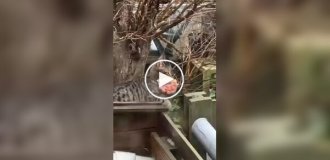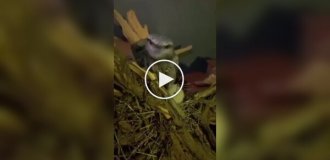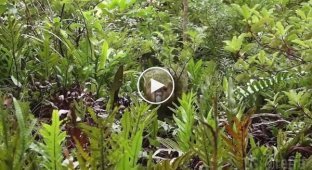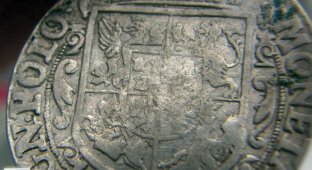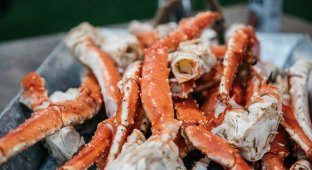Meet the kakapo parrot. The bird cannot fly, is nocturnal and grows to the size of a chicken. 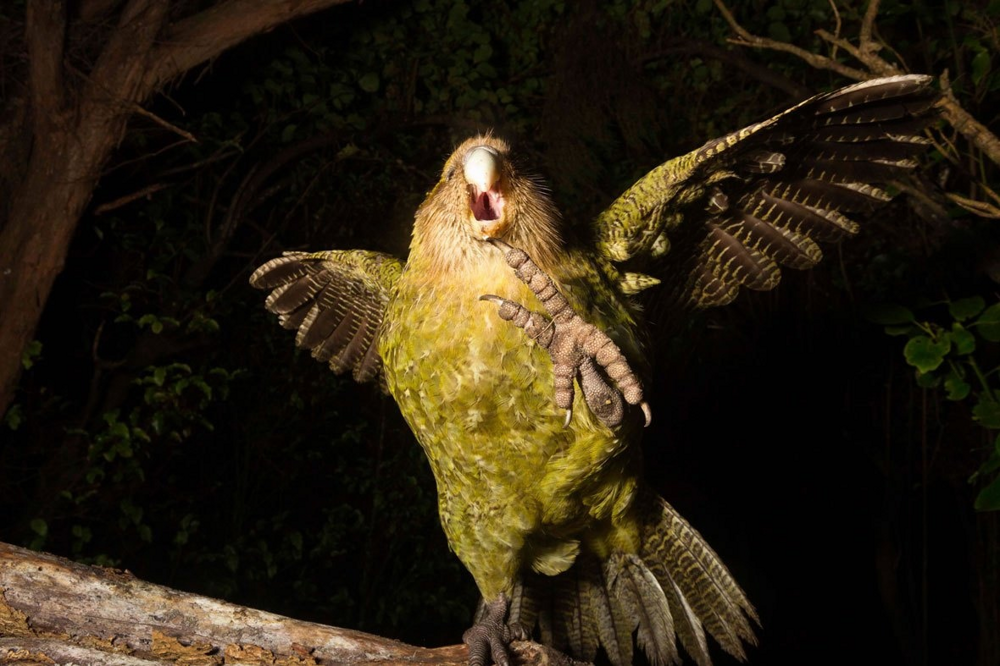
It all started about 82 million years ago, when New Zealand was forever separated from the mainland. And on it, by chance or by great design, were the ancestors of the kakapo from the superfamily strigopoidae. Small isolated islands have become a paradise on earth for birds: there are no predators, but there are resources and food - a whole undeveloped island! The birds lived happily and even after 53 million years they were divided into two genera: Nestor and our kakapo. 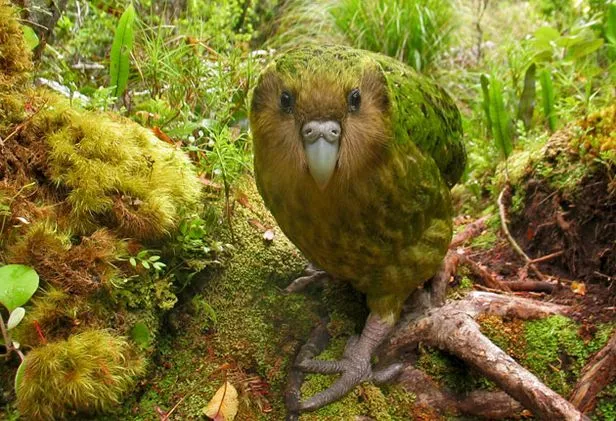
The chance that you will be hunted by a kakapo is small. But it is never equal to absolute zero.
During this time, the green parrots managed to radically change all their habits, lifestyle and even anatomy. The most important metamorphoses affected flight - parrots abandoned the sky and switched to a completely terrestrial lifestyle. Their legs and pelvis became larger and stronger. But the birds’ arms clearly missed a day: the wings, pectoral muscles and keel were greatly reduced. Nowadays, kakapo stumps are only suitable for “parachute jumping.” A parrot, falling from a tall tree to the ground, opens what is left of its wings, softening its fall. 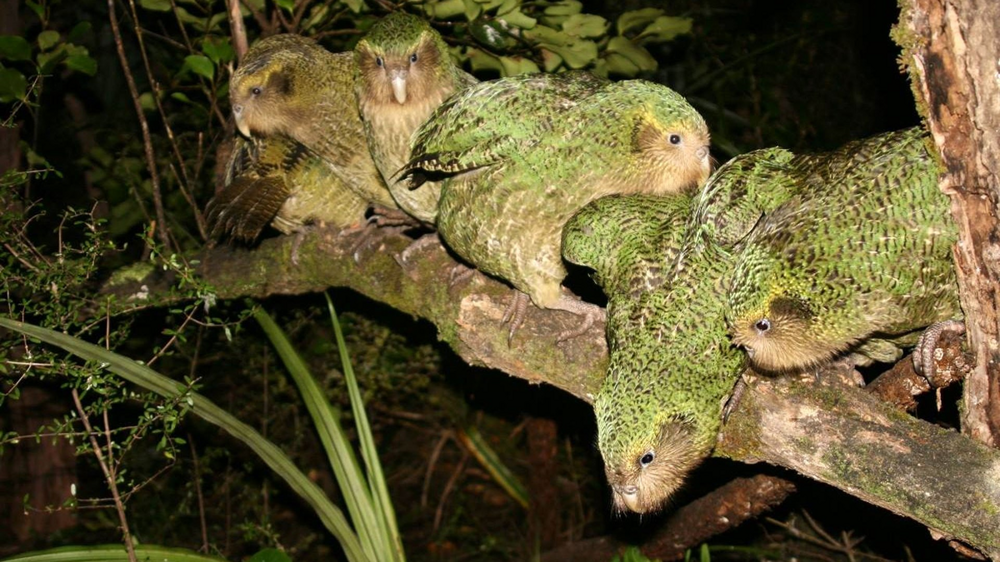
After giving up flight, the kakapo's feathers became softer and lighter, like wool. These will no longer lift the parrot into the air, but they will protect them from the night cold of the island. By the way, about the night. Have you noticed that the parrot's face suspiciously resembles that of an owl? This is not a coincidence - the facial disc, like that of raptors, works like a plate for collecting sounds in kakapos. It’s very convenient when you go out onto the boardwalk in pitch darkness. 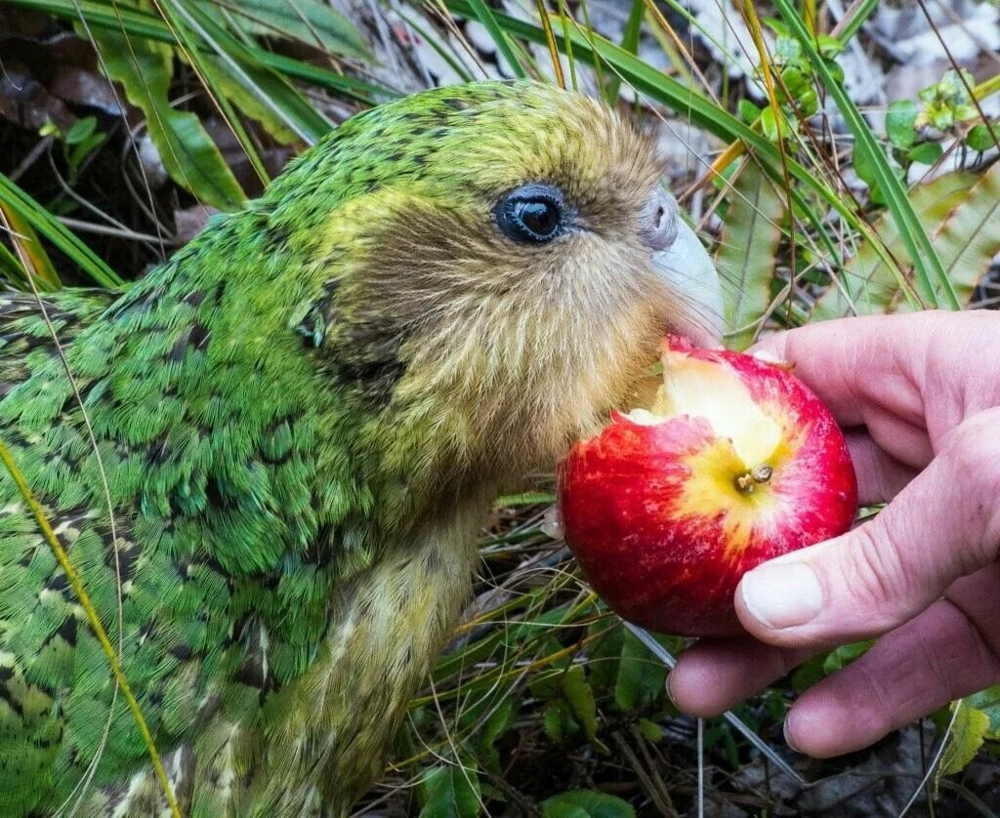
Another acquisition for navigating the jungle at night is a mustache! The beak of the kakapo grows especially sensitive feathers, which are most likely similar in function to the vibrissae of mammals.
Since you don’t need to fly, you can eat properly! Today, kakapo are considered the largest (read fattest) parrots in the whole world: females gain up to 1.6 kilograms, and males gain up to 3. This is a lot of large broilers! 
The kakapo lived as if in paradise until people came to New Zealand. And away we go: dogs appeared on the island, for whom the flightless fat parrot is an easy prey. Apart from its camouflage-green color, the bird has nothing to oppose hunters. Moreover, the unfortunate bird with its giblets gives itself away by its smell - it has a musty-sweet smell. Researchers note that the odor is similar to a floral aroma or sweet honey. 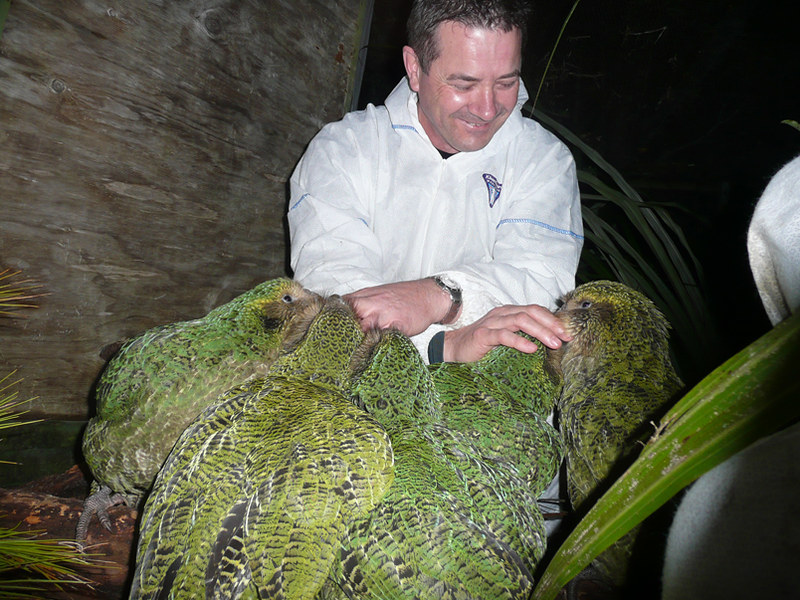
People also tried to increase the bird population to zero: kakapo were exterminated for meat and feathers. And the bipeds overdid it so much that in 1995 only 51 birds remained. Everything seemed lost, but local authorities began active efforts to restore the parrots: they transported the existing ones to remote safe lands and in every possible way contributed to their reproduction. 
Despite the fact that people have been exterminating kakapo for centuries, the birds have not yet developed a fear of humans. Researchers calmly interact with birds.
Kakapo, by the way, have a problem with this. The breeding season of parrots coincides with the abundant fruiting of local plants that the birds feed on. And this happens infrequently - only once every 2-5 years! In addition, the female lays only 1-4 eggs, from which less than half of the chicks hatch, because very recently the species went through a “bottleneck” - an exceptional decrease in population and genetic diversity. 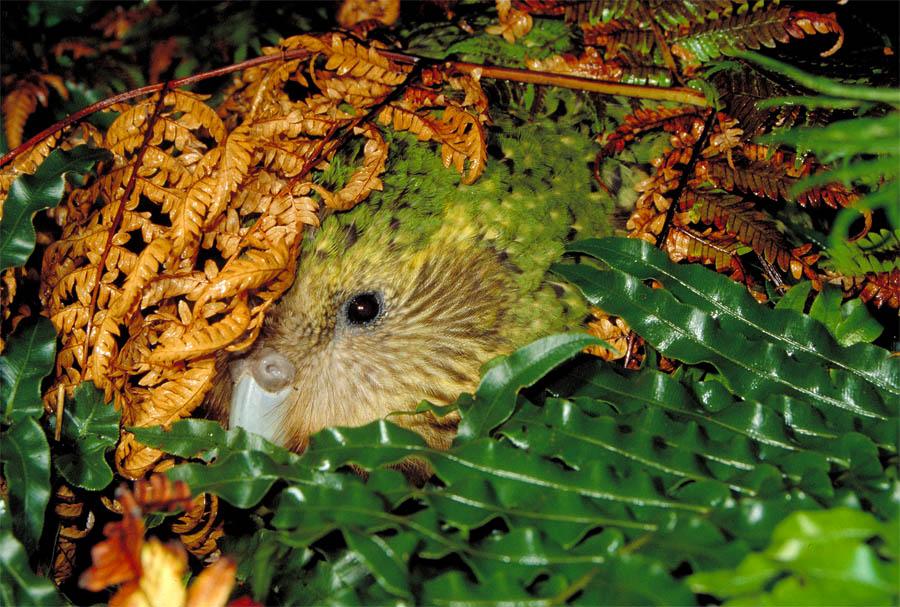
You have been noticed.
In good years, the mating season lasts from January to March. Males fight desperately for the best area, then clear it and dig shallow holes there, up to 10 centimeters deep. After this, the kakapo begin to buzz loudly, inviting females ready to mate. More precisely, it was like that before. Now, with a low population density, parrots often do not hear each other and cannot meet in time. People use drones to make love happen! Biomaterial from males is sent using technology to scientists who are already sitting nakedotové with female kākāpō. 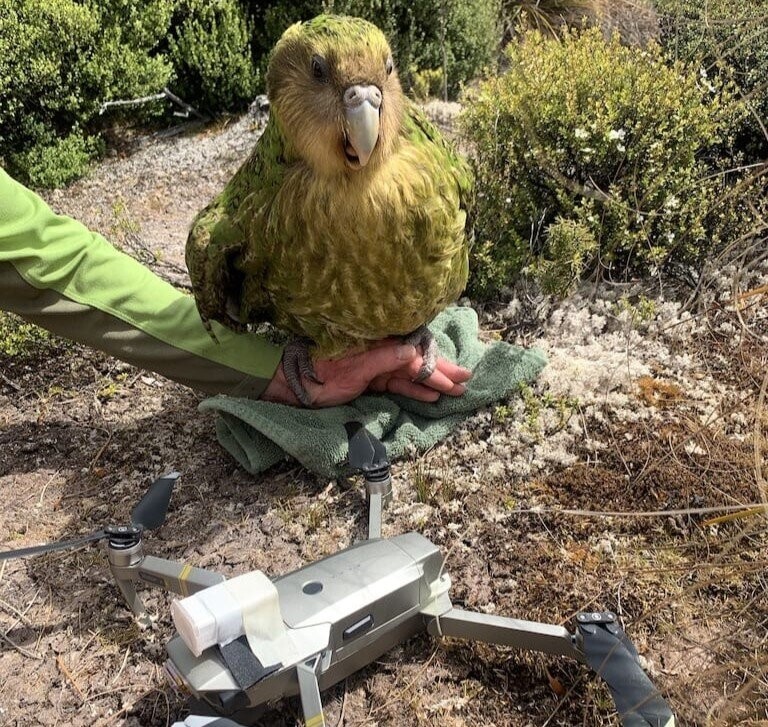
In addition, each clutch of birds is monitored and checked. Incubation lasts approximately 30 days, and the chicks are very vulnerable in the first weeks of life. They will be able to leave their nest in a hole in an old stump or a rock crevice only 12 weeks later. They do not go far; for about 3 months the females (and scientists) will support and care for them. 
Interestingly, breeding birds in captivity does not give good results for two reasons. Firstly, parrots do not tolerate confinement conditions well, so no one will risk the health of the remaining handful of kakapo. Secondly, the better conditions the female has during reproduction, the more males there will be among the babies. It is so arranged that the formation of a large male requires more resources. 
- Mom, where is our dad? - He is your helicopter pilot. Arrived and departed...
Therefore, ornithologists come up with all sorts of ways to ensure that the birds reproduce in their natural environment. And it works! It may be quiet and slow, but the kakapo is not yet in the Black Book - today the bird population is 248 birds.
Add your comment
You might be interested in:


